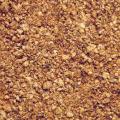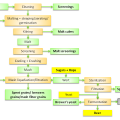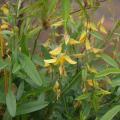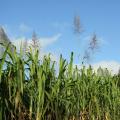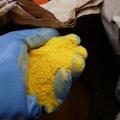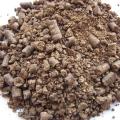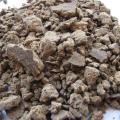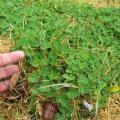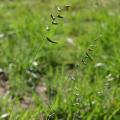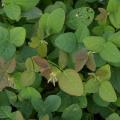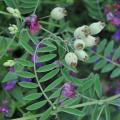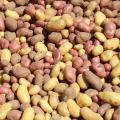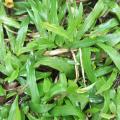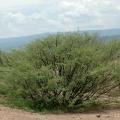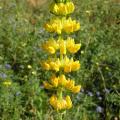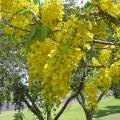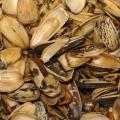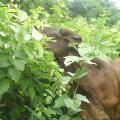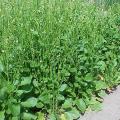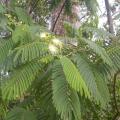Feedipedia news
The workshop Food and Feed for the Future took place in Lyon, France, on 1 September 2023. It was organized by INRAE, AFZ and CSIRO and sponsored by the OECD Co-operative Research Programme "Sustainable agricultural and food systems".
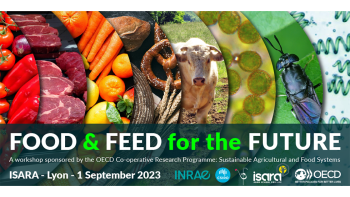
Click on the link below to download the proceedings (free)
Click on the link below to register for accessing other materials of the workshop (free for AFZ members)
Explore Feedipedia
|
Cottonseed meal is the by-product of oil extraction from cotton seeds. As a protein-rich... Read more |
Brewers yeast is a by-product from the breweries, which use the micro-organism and fungal... Read more |
Sunn hemp (Crotalaria juncea L.) is a multipurpose tropical and subtropical... Read more |
|
The honey locust (Gleditsia triacanthos L.) is a legume tree up to 25-45 m high... Read more |
The sugarcane plant (Saccharum officinarum) is primarily cultivated for sugar... Read more |
Corn gluten meal is a by-product of the manufacture of maize starch (and sometimes... Read more |
|
Peanut meal is the by-product obtained after the extraction of oil from peanut seeds (... Read more |
Linseed meal is the by-product of oil production from linseeds (Linum usitatissimum... Read more |
Subclover (Trifolium subterraneum L.) is a much valued annual legume forage used... Read more |
|
Spotted brachiaria (Brachiaria nigropedata (Munro ex Ficalho & Hiern) Stapf... Read more |
Samoan clover (Desmodium scorpiurus (Sw.) Desv.) is a vigorous perennial... Read more |
Purple vetch (Vicia benghalensis L.) is a climbing herbaceous legume from the... Read more |
|
Potato tubers are the subterranean swollen, starchy tubers of the potato plant (... Read more |
Para grass (Brachiaria mutica (Forssk.) Stapf) is a semi-aquatic, palatable and... Read more |
Orfot (Vachellia oerfota (Forssk.) Kyal. & Boatwr., formerly ... Read more |
|
Yellow lupin (Lupinus luteus L.) is one of the 200 species of lupins, a genus of... Read more |
The golden tree (Cassia fistula L.) is a tropical and subtropical legume tree... Read more |
Sunflower hulls are the by-product of the dehulling of sunflower seeds before they are... Read more |
|
Cratylia (Cratylia argentea (Desv.) Kuntze) is a shruby perennial tropical... Read more |
Crambe (Crambe abyssinica Hochst. ex R. E. Fr.) is a cruciferous oil plant that... Read more |
Chinese albizia (Albizia chinensis (Osb.) Merr.) is an almost evergreen... Read more |
Pages
Recent resources
The role of livestock in food security, poverty reduction and wealth creation in West Africa
- Molina-Flores et al., 2020. Food and Agriculture Organization of the United Nations Accra, 2020
Livestock is key to 377 million people in West Africa and in some countries, up to 60% of the population is involved in livestock production. The demand for animal products is increasing with population growth, urbanization, growing middle class, and due to shifting consumer preferences towards animal products. To meet this growing demand, countries in West Africa must engage in accelerated sustainable livestock production undertaking. Livestock development is key to eradicate hunger and poverty. This book attempts to provide up-to-date, and reliable information on the potentials, opportunities, and challenges of the livestock subsector in West Africa.
Pulses and their by-products as animal feed
- Sherasia et al., 2017. In: Calles, T.; Makkar, H. P. S. (Eds), FAO, Food and Agriculture Organization of the United Nations, Rome, Italy
This document provides a state-of-the-art review of the recent research (published and unpublished) on the use of pulses and their by-products as animal feed. It aims at raising awareness on the use of pulses and their by-products. It highlights the nutritional role of pulses and pulse by-products as animal feed and is a contribution to the legacy of the 2016 International Year of Pulses. This document will further enhance the use of these feed resources in other continents, besides Asia, where many pulse by-products are simply dumped. It is also expected that the synthesis presented contributes to make the use of pulses and their by-products as animal feed more efficient. This document will be useful for extension workers, researchers, feed industry, policy-makers and donors alike.
Opinion paper: A regional feed action plan – one-of-a-kind example from East Africa
- Opio et al., 2020. Animal, 1-4
Open access document. This paper puts forward a case for formulation of a regional animal feed action plan (RAFAP) and highlights its potential benefits.








